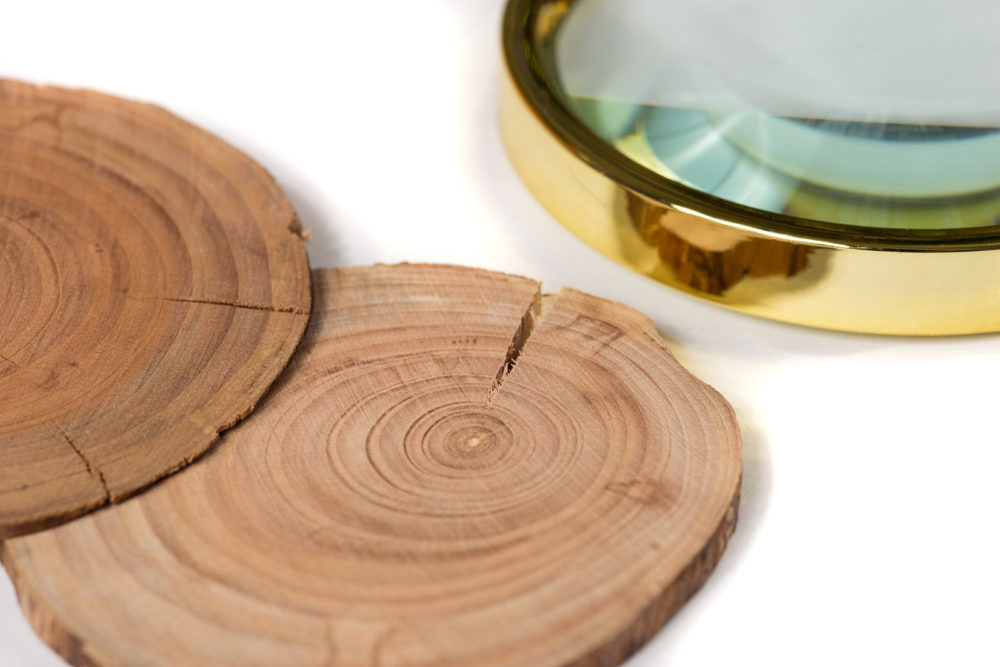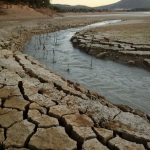
Introduction: Explaining Chronology
Ever since The Enlightenment, and possibly even before that, researchers have attempted to understand the chronology of the world around us, to figure out precisely when each stage in our geological, biological and cultural evolution took place. Even when the only science we had to go on was religious literature and the western world believed the world was created in 4004BC (1), scholars tried to figure out when each biblical event took place, to define a chronology from savagery to civilization, from creation to the first animal, then to the emergence of the first people.
The pre-enlightenment understanding of our geological and cultural history may now be proven wrong and subject to ridicule, but the principles of defining our place in time in the cosmos underpin many sciences. As technology advances, so do our methods, accuracy and tools for discovering what we want to learn about the past. All dating methods today can be grouped into one of two categories: absolute dating, and relative dating. The former gives a numeric age (for example, this artefact is 5000 years old); the latter provides a date based on relationships to other elements (for example, this geological layer formed before this other one). Both methods are vital to piecing together events of the past from the recent back to a time before humans and even before complex life and sometimes, researchers will combine both methods to come up with a date.
Some of the methods covered here are tried and tested, representing early methods of examining past geological, geographical, anthropological and archaeological processes. Most are multidisciplinary, but some are limited, due to their nature, to a single discipline. No system is completely failsafe and no method completely correct, but with the right application, they can and have aided researchers piece together the past and solve some of their discipline's most complex problems.
Ever since The Enlightenment, and possibly even before that, researchers have attempted to understand the chronology of the world around us, to figure out precisely when each stage in our geological, biological and cultural evolution took place. Even when the only science we had to go on was religious literature and the western world believed the world was created in 4004BC (1), scholars tried to figure out when each biblical event took place, to define a chronology from savagery to civilization, from creation to the first animal, then to the emergence of the first people.
The pre-enlightenment understanding of our geological and cultural history may now be proven wrong and subject to ridicule, but the principles of defining our place in time in the cosmos underpin many sciences. As technology advances, so do our methods, accuracy and tools for discovering what we want to learn about the past. All dating methods today can be grouped into one of two categories: absolute dating, and relative dating. The former gives a numeric age (for example, this artefact is 5000 years old); the latter provides a date based on relationships to other elements (for example, this geological layer formed before this other one). Both methods are vital to piecing together events of the past from the recent back to a time before humans and even before complex life and sometimes, researchers will combine both methods to come up with a date.
Some of the methods covered here are tried and tested, representing early methods of examining past geological, geographical, anthropological and archaeological processes. Most are multidisciplinary, but some are limited, due to their nature, to a single discipline. No system is completely failsafe and no method completely correct, but with the right application, they can and have aided researchers piece together the past and solve some of their discipline's most complex problems.
Which Sciences Need These Dating Tools?
Any scientific discipline for which chronology is important may utilize these dating methods. They may tell us many things including age, but also its place in a sequence of processes. Typically, this will include:
- Anthropology: the study of people and their behaviors in the past and the present. Dating methods in anthropology can inform us of the relative time periods of a settlement, human action such as agricultural spread, and settlement expansion and contraction
- Archaeology: the study of the material remains of people from the past. Dating methods here overlap with those discussed in anthropology, but archaeologists are also interested in artefact morphology/typology (and evolution such as stone tool development) and cultural change
- Geography: Like geology below, geography is the examination of the processes of the physical features of our planet. As such, they occasionally need dates to understand the extent and impact of natural occurrences
- Geology: the study of the physical structures of our planet are interested in dating methods to attempt to learn the actual age of geological processes (when an earthquake occurred, when a river dried up or flooded) but also sequences such as the processes that formed The Grand Canyon
- Paleontology, paleobiology and paleobotany: the study of extinct biological lifeforms use relative dating for the study of bone morphology and typology in an evolutionary context, fossilized tree ring data for sequencing purposes to determine when events happened, and absolute dating methods to pinpoint age of death of a specimen at death
- Volcanology: the study of volcanoes although this is more of a subdiscipline of geology in some contexts, understanding the process of volcanic activity can be a dating method in itself. Dating volcanic deposits such as lava flow will often contextualize geological, archaeological, anthropological and geographical events
These are the scientific areas with which we most associate dating methods. However, some other areas apply the same or similar principles in dating. For example, astronomy uses some relative dating methods to calculate the age of the surface of planets by methods other than its materials, especially where physical samples are impossible to acquire. Sometimes, we see them used in forensic science such as criminal investigations to determine the time and date a crime was committed, commonly when dating the time of death of a homicide victim.
Absolute Dating Methods
Also known as “Chronometric Dating” (2) or numerical dating (3), absolute dating aims to put a specific age or date on an object, layer or other material remains. There is always a margin of error and in some cases, the date will be calibrated and given a range. Typically, you might receive a date of 3800-4000 years BP (before present). Here are some of the most common absolute dating methods.
Amino acid dating: This relatively new form of absolute dating is useful in archaeology, anthropology, paleobiology, molecular biology and anything else that may study organic substances to pinpoint an actual date or define a date range. It's found a great use in the tracking of human migrations in antiquity, demonstrating earlier arrival of humans into North America - pushing dates back from 15,000 years to 50,000 years (4). Amino Acid Dating is used to acquire dates numbering in the hundreds of thousands, although some calibration is required to account for local temperature conditions. It cannot date anything less than 1,000 years old.
Paleomagnetic / Archaeomagnetic dating: By studying the changes in the magnetic signature of deposits, artefacts, but particularly soil disturbance, archaeologists and paleontologists can determine precise dates. There are two ways a magnetic signature forms - firstly through extreme heat such as in pottery production or hearth fires. The second is water deposition which essentially “freezes” that magnetic particle in places (5). The method is not as limited as we might think; it's been a vital method for some 70 years in discovering dates for ancient archaeological/anthropological deposits. It has a limit of up to 10,000 years.
Dendrochronology/Herbchronology: Dendrochronology is the study of tree ring growth and comparing a sequence to an accumulated database to come up with precise dates for events. Similarly, herbchronology examines the growth rings in perennial plants other than trees to come up with the same information. Such rings can tell us the year the plant or tree was cleared; it can also shed light on geological or environmental events that alter the environment. For example, a tree ring pattern may show lower growth during a volcanic eruption. But they can also show human intervention such as when woodland was cleared to make way for agriculture (6).

Lead-lead dating: Another method that studies the chemical attributes of rocks, it's largely been superseded by uranium-lead dating in geological studies. However, it remains useful to astronomers and astrophysicists in dating meteorites and other extraterrestrial deposits on Earth. As lead isotope decay at a standard and slow rate, it's able to provide fairly accurate date ranges which it measures in the millions of years. For further details, see uranium-lead dating section below.
Luminescence/Thermoluminescence: This measures the amount of light emitted from energy stored in rocks. Geological materials store energy from the sun at a constant and known rate. When these materials are heated to high temperatures through such processes as pottery firing, that is released. Once it cools, these materials begin to absorb energy from the sun once more. These energy levels are measured against what they should be if they had not been interfered with and we are able to obtain a date of the intervention. This is used in archaeological and anthropological contexts (7) in areas where radiocarbon dating is problematic such as dating post AD1700 and where dates from RC14 is anomalous or lacks data. It has a maximum range of around 100,000 years.
Potassium-argon dating: Typically used in geology and geochronology, K-Ar dating has a minimum age of around 100,000 years ago (but can be problematic when examining material close to this earliest date) up to a top end of around 4.5 billion years. It's ideally suited to volcanic and igneous rock so long as the rock has not gone through a reheating process. It has uses in archaeology and anthropology, but these are limited to examining human deposits that lie beneath volcanic flows (8). However, in most cases for archaeology and anthropology, radiocarbon dating is more accurate.
Radiocarbon dating: Arguably the best-known of all absolute dating methods, radiocarbon dating has gone through several changes since discovery in 1960, initially measuring RC12 but now used RC14 as a much more reliable isotope for examination. It measures the amount of radiocarbon in the atmosphere against that in organic materials. When organic life dies, it stops a carbon exchange with the environment (9). It's been a great tool for archaeology and anthropology and has provided some interesting dates. After around 60,000 years, organic life has no radiocarbon isotopes left so this is the upper limit of the technology.
Radiocarbon14 Accelerated Mass Spectrometry (AMS): This form of RC14 requires smaller sample sizes than standard RC dating methods and delivers much more reliable results. It does this through accelerating ions to incredibly high kinetic energy levels and recording different elements by their atomic weights and ignoring the elements that can distort standard RC14 dating results (27).
Uranium-lead dating: This is one of the most accurate absolute dating methods for measuring ages in the millions and billions of years. As mentioned above, it has superseded lead-lead dating in most applications due to its greater accuracy and reliability; it's been a reliable indicator since before the discovery of radioisotopes on which many of these dating methods are based (10). It cannot be used for dating anything younger than 1 million years which means its mostly useful for geological rather than anthropological/archaeological processes. This (as with lead-lead) records the degeneration of certain isotopes into stable isotopes, allowing the pinpointing of a date.
Advantages and Problems of Absolute Dating Methods
The first advantage of an absolute dating method is that it can, and will, put a date on an artefact or layer. They can tell you how old something is to a near-precise date or within a set range, usually with a slight margin of error. Each has a failsafe built in through the academic method and repeated testing. Multiple tests are carried out on a subject material, choosing a range of samples to ensure that such problems are eliminated. Researchers will also send samples to different labs, ensuring that each is unaware of which other labs are carrying out tests. When there is concurrence, we can be quite certain of the date or date range that results from the test.
The second major advantage is that we can date material without destroying it. As time has gone by, new developments mean smaller and smaller samples are required for more accurate dates. This is especially true for radiocarbon dating. Examining RC14 isotopes through AMS, tiny fragments of a material will be destroyed only. The range of options available offer a significant advantage. The sheer number of choices, some of which overlap, means that if an anomalous result comes up with one method, other methods may be applied to ensure that the anomaly is just that or confirm a change in thinking regarding the dating of such material.
Most problems associated with such radiometric, chemical and other absolute dating methods are the result of user error rather than flaws in the method. The first major issue with any absolute dating method is ensuring that you're selecting the right material from the right places and not including later contaminants; these test results will be skewed, throwing up anomalous results. It's easy to date inclusions or to accidentally select contaminants from the material. There are many examples where this has happened, especially with thermos/luminescence (11) and radiocarbon dating (12). Further limitations exist in dating material that has been reused. One example of reused wood from ancient tomb showed the wood to be far older than the construction of the tomb (13). It was the case, and the method was not flawed, but the reliance on this method requires other aspects to be considered to ensure that we are not solely relying on absolute dating methods in isolation.
One of the greatest problems that archaeologists have had to handle is the overlap and replacement of Neanderthal with anatomically modern humans in Central Europe (14). Contamination by modern carbon sources suggests that the dates often thrown up at the greater end of the range of radiocarbon dating suggest that traditionally understood dates of the appearance of modern humans, disappearance of Neanderthals and the extent to which they overlap on the continent, suggests that dates acquired over the last 50 years may be too young in some instances.
Relative Dating Methods
Relative dating methods do not seek to put an exact date on a layer, artefact or activity (although it can within a reasonable amount of doubt). It seeks to explain each item in context of its relationship to everything else, placing it in a sequence. With relative dating, we can see that artefact A came after artefact B by examining its evolution in design or methods of production. We can also see and explain how one geological layer came after another. Here are the most common methods.
Faunal/Flora succession: Useful in geography, anthropology and archaeology and environmental studies, this examines the principles of relationships of species relative to each other. It observes sedimentary rock layers for signs of fossilized organic material. This data is used to explain not evolution (although it can - that's not its purpose), but the sequence of succession for the lifeforms that occupied that particular landscape at a given time, and to examine when a layer was set down. It does not give dates, but it does demonstrate landscape changes through the organic life that occupied it in that time frame. Pieced together, we can build a profile over larger areas (17).

Palaeomagnetism: Useful in Earth Sciences such as geology and geography, as well as archaeology and anthropology, there is surprisingly much to learn about the palaeomagnetic record (the study of the magnetic field of the past). It's contributed to the study of continental drift and plate tectonics in the former and dating pottery and brick firing in the latter (21). In archaeology, the study has provided unequivocal and solid dates for the earliest occupation of humans in China and Western Europe, including several relative studies of the archaeological landscape.
Palynology: This is the study of fungal spores and plant pollen during their sexual reproduction stage. Each individual plant or fungus releases thousands of individual spores/pollen which then settle in water bodies and become embedded in silt. Archaeologists and anthropologists can use surviving materials to build a chronology of changes to a landscape over time (22). This can be used to build a landscape history, a profile of land occupation by humans, and tell us much about the local climate at any given time. Often used in conjunction with absolute methods such as radiocarbon dating.
Stratigraphy
This is a broad area within geology, and in archaeology and anthropology, that examines layers of a landscape. It says nothing about the age of each layer, merely the sequence of deposition. The principles mentioned below make up the theory of the science.
Cross-Cutting Relationships: Used in geology, this is one of the main defining principles of the science. It's the process of examining relationships and interactions between geological layers to determine a sequence - usually to understand which are earlier. Through it, we come to understand and explain how disrupted layers are older than the actual layers (15). It challenges the principle that a sublayer is always earlier though it is in most cases. Tectonic plates can push rock layers beneath others, creating mountain ranges (16).
Harris Matrix: This is a tool of stratigraphy rather than a method used in archaeological contexts, utilizing some of the three Principles listed below. A Harris Matrix is a diagram similar to a flowchart that breaks complex stratigraphic layers into a most likely sequence. It does not state the age of the layers but sets down the most likely process by which the sequence came to be. Usually, they will use three labels: layers (a stratigraphic layer), cuts (a feature showing where a later addition cut through each layer) and fills (when the cut was filled - naturally, a fill cannot predate the cut of which it is a part) (18).
Law of Inclusions: Like cross-cutting, the premise for this is that any anomalous clasts in geologic layers or inclusions found within an archaeological stratigraphic layer must be older than the layer itself, even if deposited later. There are many reasons why we should never attempt to date inclusions as proof of the age of the layer; the anomalies that inclusions throw up is just one of them. It's important not to confuse the age of the item with the date of deposition (19).
Principle of Lateral Continuity: Mostly used in geology but with some stratigraphic use in landscape archaeology too, it defines that layers that have become separated or split but otherwise appear to share a relationship must have been deposited at the same time. How this is used as a relative dating method is by examining the stratigraphic layer and looking at those elements of the landscape that cut through them (23). Returning to the Grand Canyon as an example, The rock layers on both sides of the canyon were deposited at around the same time but were broken up by the cutting of the river through it.
Principle (or Law) of Original Horizontality: This is a simple premise defining that even when stratigraphic layers are vertical or angled, they must have originally been set down horizontally - that later geological processes must have skewed the rock formation, altered the angle or distorted the present profile (24). This can be used in conjunction with the other principles listed here - Superposition (see below) and Lateral Continuity (see above).
Principle (or Law) of Superposition: This is a basic premise of stratigraphy useful in both the Earth Sciences and anthropology/archaeology that works in conjunction with Original Horizontality and Cross-Cutting Relationships (24). It states that lower surface layers in a sequence must have been deposited first and are therefore the eldest. It naturally follows that the higher layers are newer/younger.
Tephrochronology: This method for dating volcanic ash based on its inclusions such as glass particles and other chemical compounds. As it can travel potentially enormous distances and survive under the same conditions as palynology (peat bogs and silt) it can tell us a great deal about when the volcano erupted, its strength and power, and when examined in conjunction with other archaeological and geological evidence, to build a picture of the fall out (28). This means it is also useful for climatology and paleoclimatology.
Typology
This examines the evolutionary changes to any artificial item - be it functional or aesthetic artefacts, rock art, building construction and materials, it attempts to demonstrate through sequences or examining the methods and materials, its relationship to other items in its class or style.
Morphology: Used in archaeology and anthropology, the examination of artefact size, shape and form to define them into categories such as period, style, design and technological advance. This is used in conjunction with artefact typology (see below) which is a much more complex form of categorization which examines function as well as form and design (20 p43).
Seriation: Seriation is the placement of artefacts in chronological order, assuming a sequence of evolution (usually by technological advance, complexity and method of manufacture) (25). It's most frequently and reliably used with stone tools, pottery and grave goods in prehistoric and historic contexts.
Sequence Dating: Famous archaeologist William Flinders Petrie created a variation on this called Sequence Dating. He developed the relative dating method during his studies in Egypt. This further refines Seriation by examining different styles of artefacts and categorizing into different archaeological time periods. Its fundamental to examining both artistic styles and technological advance, but also social and political change (26).
Terminus Post Quem / Terminus Anti Quem: These archaeological concepts set a final and earliest possible date on something (29). The Terminus Post Quem (Latin translated as “the limit after which”) is the earliest possible date of an object or layer. To use a simple example, a Roman grave containing coins from the reign of Emperor Nero could not possibly have been buried before his reign. The earliest possible date then is the first year of his reign (AD54).
Similarly, the Terminus Ante Quem (Latin translated as “the limit before which”) is the latest possible date for an artefact or layer. A Terminus Ante Quem would be discovering the above burial beneath a structure with a known date (by documentary or other evidence) such as Trajan's Column. This was constructed in AD113. Our hypothetical grave could not have been buried before AD54 or after AD113.
Advantages and Problems of Relative Dating Methods
Relative dating has proven useful for most of the existence of the sciences considered here. Each, in their own way, has allowed researchers to determine sequences and relationships between artefacts development including methods, technology and artistic style, geological sequences and events, attempting to piece together a most likely series of phases of evolution and change. In archaeology, it typically shows us technological advance and artistic style change.
In geology, it shows us long-term environmental change and events and effects of geological cataclysms. But there are limitations to all these methods above, even when used in conjunction with each other. Most relative dating methods work best when used in conjunction with the absolute dating methods already discussed; when dates correlate, we can be confident of the methods. Together, they allow us to build a complete picture for dating and sequencing.
The first major drawback to all relative dating methods is that they rarely put specific dates on an artefact or process. We can only say that Event A came before or after Event B. It cannot tell us when either event took place. Only absolute dating can do that (within reason and with a reasonable margin of error supplied).
The second major drawback and similarly, Relative Dating Methods rarely lend themselves well to demonstrating timescale. Even if we know that Artefact A was produced and used before Artefact B, on its own the relative dating method used to explain this cannot tell us how far apart they were produced or used, or how long they existed in the human record. It could be a year, or it could be millennia. To place five artefacts in a visual diagram sequence may, in isolation, suggest that each artefact type's style, method, or morphology have some sort of parity - either in terms of popularity, ubiquity or length of use. The style of Artefact A's period of use may be longer than the chronology of Artefacts B, C, D and E put together. This is especially the case with stone tool development of the Stone Age periods. In the Old World, the Paleolithic lasted 2.6m years; the Mesolithic lasted 4,000 years - a period of incredible and (relatively) fast technological change, and the Neolithic lasting around 2,000 years (30).
To adapt this problem for geology, relative dating methods cannot tell us how long a stratigraphic sequence took to accumulate - only explain those after which and before which it was set down. Nor can we take it for granted that a thinner deposit is shorter than a deeper deposit. The eruption of Vesuvius in the first century AD deposited 6m/20ft of ash over several nights, burying the town of Herculaneum and the city of Pompeii (31). A layer of this thickness elsewhere might conceivably take decades or centuries to form.
Even between sites, problems may exist. A known geological timescale may manifest itself differently between climates of Alaska compared to the very different climate and topography of modern New Mexico; often, this is dependent on the local climate and conditions.
Sources
- https://blogs.scientificamerican.com/history-of-geology/october-23-4004-bc-happy-birthday-earth/
- https://sciencing.com/chronometric-dating-7317999.html
- https://www.sciencelearn.org.nz/resources/1486-absolute-dating
- https://www.jstor.org/stable/124036?seq=1
- https://pdfs.semanticscholar.org/226d/4a042de7a1d2d559d9251bdf139338b9779c.pdf
- http://www.anth.ucsb.edu/faculty/stsmith/classes/anth3/courseware/Chronology/09_Potassium_Argon_Dating.html
- https://www.radiocarbon.com/about-carbon-dating.htm
- https://www.princeton.edu/geosciences/people/schoene/pdf/4_10_Schoene_UThPb_geochronology.pdf
- https://www.sheffield.ac.uk/polopoly_fs/1.557552!/file/bateman2007.pdf
- http://www.archaeologyexpert.co.uk/radiocarbondating.html
- https://journals.uair.arizona.edu/index.php/radiocarbon/article/view/16267
- http://citeseerx.ist.psu.edu/viewdoc/download?doi=10.1.1.468.1579&rep=rep1&type=pdf
- https://pdfs.semanticscholar.org/6562/ce3b7e3c9faa4118a39e8382e3e83cb0df3d.pdf
- https://www.uvm.edu/perkins/evolution/qanda/?Page=time/faunal.html&SM=time/timemenu.html
- http://mag.rochester.edu/wp-content/uploads/2015/05/Harris-Matrix-activity-sheet.pdf
- https://onlinelibrary.wiley.com/doi/10.1002/9781444323252.ch2?primaryCompoundsResultsPerPage=250
- http://proceedings.caaconference.org/files/2000/07_Djindjian_CAA_2000.pdf
- http://anthropology.iresearchnet.com/paleomagnetism/
- http://science.jrank.org/pages/1949/Dating-Techniques-Pollen-dating-palynology.html
- https://www.nature.com/scitable/knowledge/library/dating-rocks-and-fossils-using-geologic-methods-107924044/
- https://documents.saa.org/container/docs/default-source/doc-teachingarchaeology/seriation_lesson.pdf
- http://www.ucl.ac.uk/museums-static/digitalegypt/naqadan/sqdates.html
- https://www.radiocarbon.com/accelerator-mass-spectrometry.htm
- https://www.sciencedirect.com/science/article/pii/S1871101410000609
- https://www.britannica.com/event/Stone-Age
- https://web.arch.virginia.edu/struct/pompeii/volcanic.html
- Guide to Parasitology - November 19, 2018
- Deserts as Ecosystems and Why They Need Protecting - November 19, 2018
- Conservation: History and Future - September 14, 2018
Related Articles
Featured Article

Renewable Energy: All You Need to Know





